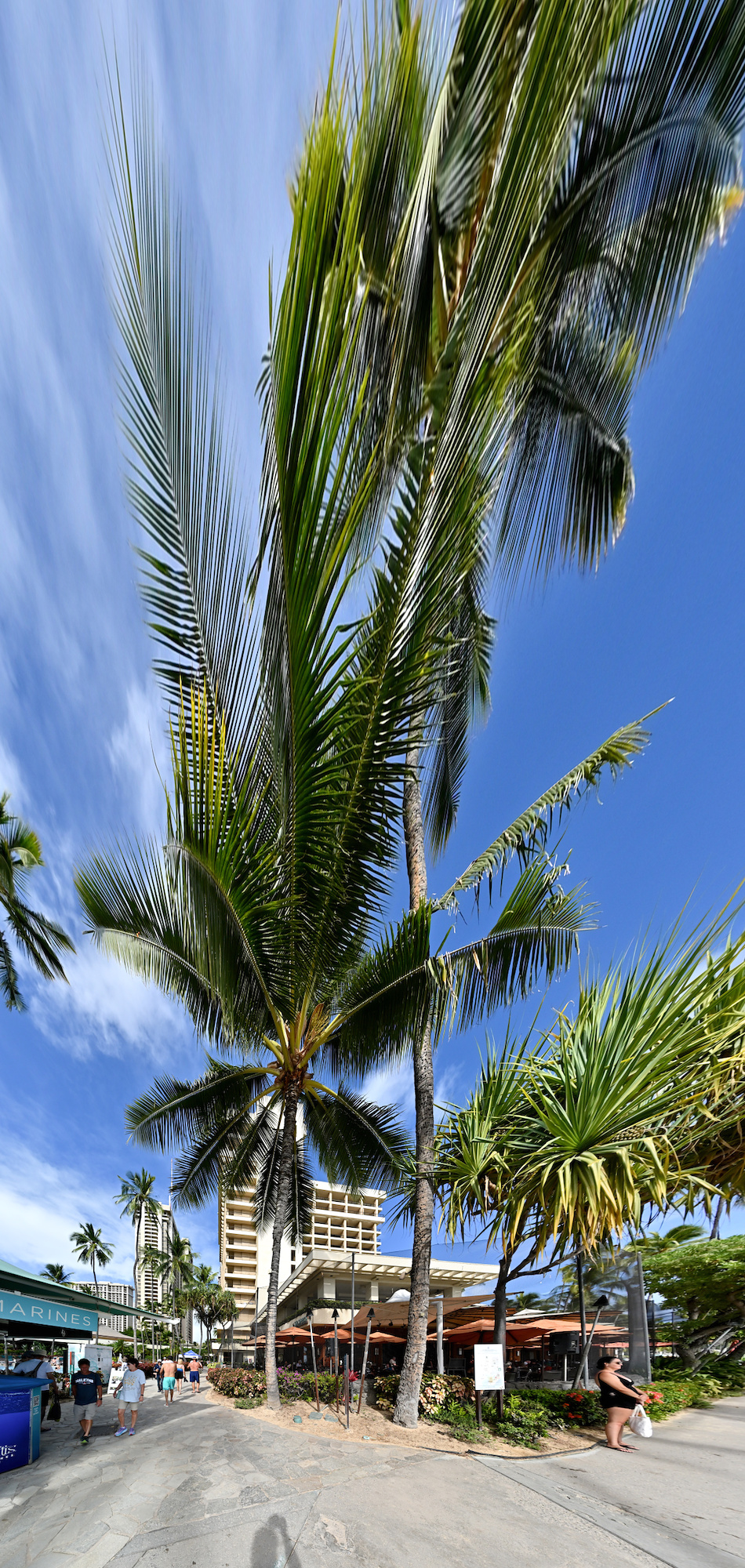Hühnchen-Gemüse-Burger
01 October, 2023
Die Frikadelle wird aus frischem Hühnchen und Gemüse gemacht.
Tomatenscheiben als nächstes:
und Zwiebelscheiben:
Dann die Soße:
Fertig zusammengebaut:
Serviert mit Pommes Frites:
01 October, 2023
Die Frikadelle wird aus frischem Hühnchen und Gemüse gemacht.
Tomatenscheiben als nächstes:
und Zwiebelscheiben:
Dann die Soße:
Fertig zusammengebaut:
Serviert mit Pommes Frites:
20 September, 2023
The panotools projections are very versatile to achieve different mappings.
I wanted to take a photo of a tall object but could not step back for a normal view angle. In this case to capture the restaurant with its palm trees from the pathway.
Both full frame fisheye pictures for a good vertical and horizontal coverage to start with:

Each of the projection has a different mapping. The Transversal projections (rotated 90°) are not used here because of the horizontal distortion:
The full frame fisheye projection:

The Equirectangular projection:

The Vedutismo projection:

The Cylindric projection:

The Rectangular projection:

And the Mercator projection.
The restaurant with the largest 🌴 in Hawaii.

See also Panotools projection, The Balcony Panorama and Stereographic projection.
20 September, 2023
With the limited view from a balcony, the result is a half spherical panorama with 180°x180°.
This is quite different from the Tower Panorama.
In the Balcony Panorama, the half sphere is to one side only:

In this example, 6 full frame fisheye pictures cover the 180°x180°:

The 360°x180° equirectangular panorama editor view displays only half the view as expected:

The cropped picture shows the equirectangular projection of the half sphere:

Different projection can be used to minimize the visible distortion.
The Transversal projections are ideal because of the large vertical field of view.
The Transversal Equirectangular projection:

or the edge-of-the-world projection:

The Transversal Cylindrical projection:

The Transversal Mercator projection:

The Transversal Vedutismo projection:

The Stereographic (circular fisheye) projection:

And the little Planet projection:


Compared to the Cylindrical projection:

And the normal rectangular projection.
That wide angle lens has to cover 150°. Good to have a 🐟👁:

See also Panotools projection, Panotools projections example and Stereographic projection.
20 September, 2023
The Hilton Hawaiian Village is a resort hotel next to the Kahanamoku Beach in Honolulu, Hawaii.
It is one of the largest hotels on the island and features a large variety of shops and restaurants for tourists.
Interactive Panorama Hilton Hawaiian Village
Interactive Panorama Hilton Hawaiian Village
Interactive Panorama Hilton Hawaiian Village
Interactive Panorama Hilton Hawaiian Village
Interactive Panorama Hilton Hawaiian Village
19 September, 2023
Die nördwestliche Verlängerung des Waikiki-Strandes, aber viel breiter, nicht so überfüllt und viel schöner.
Interactive Panorama Kahanamoku Beach
19 September, 2023
Busy shoppers crossing the Kalakaua Avenue in Honolulu.
Interactive Panorama Honolulu Shopping Street